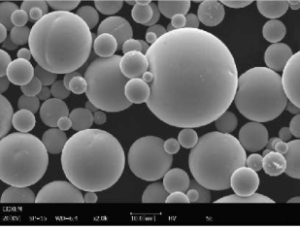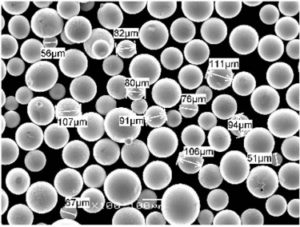Visão geral de Material de grau de forjamento
Os materiais de grau de forjamento são a espinha dorsal dos setores em que a durabilidade, a resistência e a precisão são fundamentais. Esses materiais, projetados para suportar pressão intensa e altas temperaturas, são vitais na fabricação de componentes que precisam manter a integridade sob estresse, como peças automotivas, componentes aeroespaciais e maquinário pesado. O forjamento envolve a modelagem do metal por meio de forças de compressão, geralmente por martelamento ou prensagem, o que torna crucial a seleção do material certo para garantir a resistência e o desempenho do produto final.
A seleção de materiais de grau de forjamento envolve a consideração de sua composição, propriedades mecânicas e requisitos específicos de aplicação. Com os avanços na metalurgia, vários pós metálicos estão agora disponíveis para forjamento, cada um com propriedades exclusivas adequadas a diferentes necessidades industriais.
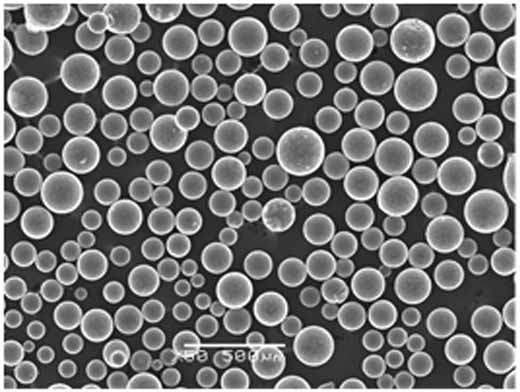
Tipos de material de grau de forjamento
Os materiais de grau de forjamento são categorizados com base em sua composição e propriedades. Os materiais mais comumente usados incluem aços carbono, aços-liga, aços inoxidáveis, ligas de titânio e ligas de alumínio. Cada uma dessas categorias tem graus específicos que oferecem características distintas, como dureza, tenacidade e resistência ao desgaste e à corrosão.
| Tipo de material | Notas comuns | Composição | Principais propriedades | Formulários |
|---|---|---|---|---|
| Aço carbono | AISI 1045, AISI 1060 | Ferro, carbono, manganês | Alta resistência, tenacidade moderada, boa usinabilidade | Peças automotivas, parafusos, porcas, engrenagens |
| Aço-liga | AISI 4140, AISI 4340 | Ferro, carbono, cromo, molibdênio | Alta resistência, excelente temperabilidade, resistente ao desgaste | Virabrequins, engrenagens, eixos |
| Aço inoxidável | 304L, 316L | Ferro, cromo, níquel, molibdênio | Resistência à corrosão, boa ductilidade, alta resistência | Dispositivos médicos, equipamentos de processamento de alimentos |
| Ligas de titânio | Ti-6Al-4V, Ti-10V-2Fe-3Al | Titânio, alumínio, vanádio | Alta relação força/peso, resistência à corrosão | Componentes aeroespaciais, implantes médicos |
| Ligas de alumínio | 2024, 6061 | Alumínio, cobre, magnésio, silício | Leve, com boa resistência à corrosão e alta resistência | Estruturas de aeronaves, equipamentos marítimos |
Composição do material de grau de forjamento
A composição dos materiais de grau de forjamento varia significativamente, dependendo do tipo de metal e das propriedades desejadas do produto final. A seguir, apresentamos uma análise detalhada da composição de alguns dos materiais de forjamento mais comumente usados.
| Material | Elementos principais | Elementos adicionais | Detalhes da composição |
|---|---|---|---|
| Aço carbono (AISI 1045) | Ferro (98,51-98,98%), carbono (0,42-0,50%) | Manganês (0,60-0,90%), Fósforo, Enxofre | Oferece um bom equilíbrio entre resistência, tenacidade e usinabilidade. |
| Liga de aço (AISI 4140) | Ferro (96,79-97,95%), carbono (0,38-0,43%) | Cromo (0,80-1,10%), Molibdênio (0,15-0,25%) | Conhecido por sua alta temperabilidade e resistência. |
| Aço inoxidável (304L) | Ferro (66,0-70,0%), cromo (18,0-20,0%) | Níquel (8,0-12,0%), Molibdênio (<0,75%) | Oferece excelente resistência à corrosão e boa ductilidade. |
| Liga de titânio (Ti-6Al-4V) | Titânio (88,0-90,0%), alumínio (5,5-6,75%) | Vanádio (3,5-4,5%) | Altamente durável, com alta relação resistência/peso, usado extensivamente em aplicações aeroespaciais. |
| Liga de alumínio (2024) | Alumínio (90,7-94,7%), Cobre (3,8-4,9%) | Manganês (0,3-0,9%), Magnésio (1,2-1,8%) | Leve e com boa usinabilidade, comumente usado em estruturas aeroespaciais. |
Características de Material de grau de forjamento
As características dos materiais de grau de forjamento dependem muito de sua composição e tratamento. Algumas características comuns incluem:
- Força: Os materiais de grau de forjamento são normalmente muito resistentes, o que os torna ideais para aplicações que exigem alta integridade estrutural.
- Robustez: Esses materiais podem absorver uma energia significativa antes de fraturar, o que é crucial para componentes sujeitos a alto impacto.
- Ductilidade: Muitos materiais de grau de forjamento são dúcteis, o que significa que podem ser deformados sem quebrar, o que é importante durante o processo de forjamento.
- Resistência à corrosão: Especialmente nos aços inoxidáveis e em algumas ligas de titânio, a resistência à corrosão é uma característica fundamental, principalmente em ambientes agressivos.
- Resistência ao desgaste: Certos aços de liga são projetados para serem altamente resistentes ao desgaste, estendendo a vida útil de peças como engrenagens e rolamentos.
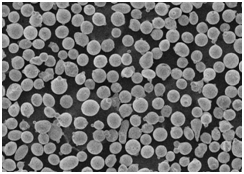
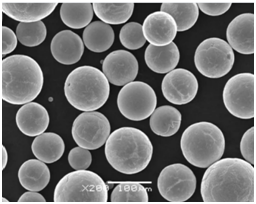


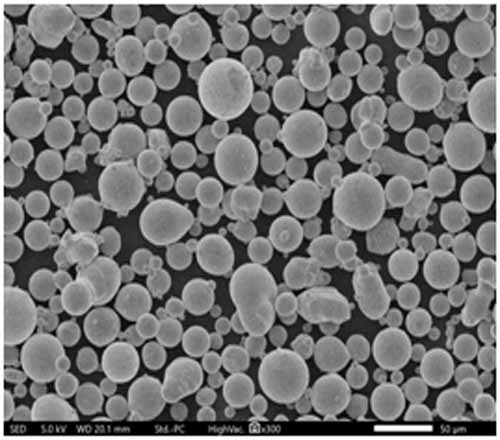
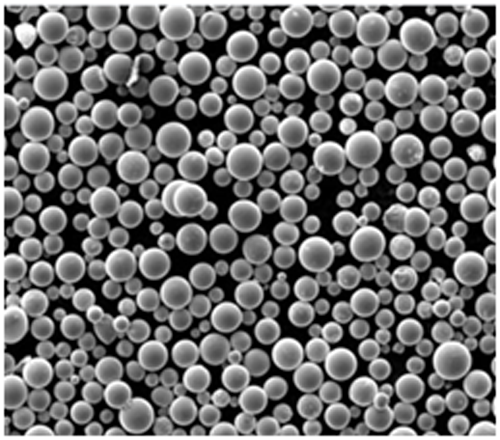
Modelos Específicos de Pó Metálico para Forjamento
Quando se trata de forjamento, a escolha do pó metálico é crucial. Aqui estão dez modelos específicos de pó metálico que são amplamente utilizados na indústria:
- Pó de Aço AISI 1045
- Descrição: Um aço de médio carbono que oferece boa usinabilidade e soldabilidade. É amplamente utilizado para peças que exigem resistência e resistência ao desgaste.
- Formulários: Ideal para componentes automotivos, peças de máquinas e engrenagens.
- Pó de Aço AISI 1060
- Descrição: Um aço de alto carbono conhecido por sua dureza e capacidade de manter uma aresta afiada. É frequentemente usado em aplicações que exigem uma combinação de resistência e tenacidade.
- Formulários: Usado para fazer facas, lâminas e ferramentas de alta resistência.
- Pó de Aço Liga AISI 4140
- Descrição: Um aço de liga de cromo-molibdênio conhecido por sua excelente temperabilidade e resistência. É comumente usado em ambientes de alta tensão.
- Formulários: Ideal para virabrequins, engrenagens e eixos de serviço pesado.
- Pó de Aço Liga AISI 4340
- Descrição: Um aço de liga de níquel-cromo-molibdênio que oferece um bom equilíbrio de resistência, tenacidade e resistência ao desgaste.
- Formulários: Comumente usado em componentes aeroespaciais e peças de máquinas pesadas.
- Pó de Aço Inoxidável 304L
- Descrição: Um aço inoxidável austenítico com baixo teor de carbono, oferecendo excelente resistência à corrosão e boa soldabilidade.
- Formulários: Usado em dispositivos médicos, equipamentos de processamento de alimentos e aplicações marítimas.
- Pó de aço inoxidável 316L
- Descrição: Conhecido por sua resistência superior à corrosão, particularmente contra cloretos, tornando-o adequado para ambientes marítimos e de processamento químico.
- Formulários: Usado em plantas químicas, equipamentos marítimos e implantes cirúrgicos.
- Pó de Liga de Titânio Ti-6Al-4V
- Descrição: Uma liga de titânio amplamente utilizada, conhecida por sua alta resistência, baixo peso e excelente resistência à corrosão.
- Formulários: Amplamente usado em componentes aeroespaciais, implantes médicos e peças automotivas de alto desempenho.
- Pó de Liga de Titânio Ti-10V-2Fe-3Al
- Descrição: Oferece uma combinação única de alta resistência, tenacidade e trabalhabilidade, tornando-o ideal para aplicações de forjamento complexas.
- Formulários: Usado em componentes aeroespaciais e aplicações estruturais onde a redução de peso é fundamental.
- Pó de Liga de Alumínio 2024
- Descrição: Conhecida por sua alta relação resistência-peso, essa liga de alumínio é uma favorita na indústria aeroespacial.
- Formulários: Usado em estruturas de aeronaves, peças automotivas e equipamentos esportivos de alto desempenho.
- Pó de Liga de Alumínio 6061
- Descrição: Uma liga de alumínio versátil conhecida por suas boas propriedades mecânicas e resistência à corrosão.
- Formulários: Comumente usado em aplicações estruturais, equipamentos marítimos e peças automotivas.
Aplicações do Material de Grau de Forjamento
Materiais de grau de forjamento são usados em uma variedade de indústrias devido às suas propriedades mecânicas superiores. A tabela abaixo descreve algumas das principais aplicações desses materiais.
| Setor | Formulários | Materiais Preferidos |
|---|---|---|
| Automotivo | Componentes do motor, engrenagens, virabrequins | Aço Liga AISI 4140, 4340, Liga de Alumínio 6061 |
| Aeroespacial | Trem de pouso, pás de turbina, peças estruturais | Ti-6Al-4V, Ti-10V-2Fe-3Al, Liga de Alumínio 2024 |
| Médico | Instrumentos cirúrgicos, implantes | Aço Inoxidável 304L, Ti-6Al-4V |
| Petróleo e gás | Válvulas, flanges, conexões | Aço Inoxidável 316L, Aço Liga AISI 4340 |
| Construção | Vigas estruturais, fixadores | Aço AISI 1045, Liga de Alumínio 6061 |
Especificações, tamanhos, classes e padrões
No forjamento, os requisitos específicos para propriedades do material, tamanhos e padrões podem variar amplamente com base na aplicação. Aqui está uma análise abrangente das especificações, tamanhos e graus para diferentes materiais de forjamento, juntamente com os padrões relevantes da indústria.
Especificações do Material de Forjamento
As especificações dos materiais de forjamento são definidas por vários atributos principais, incluindo propriedades mecânicas, dimensões e conformidade com os padrões da indústria.
| Tipo de material | Padrão | Propriedades mecânicas | Tamanhos típicos | Notas |
|---|---|---|---|---|
| Aço carbono | ASTM A105 | Limite de escoamento: 250 MPa, Resistência à tração: 450 MPa | Barras: 10 mm – diâmetro de 100 mm, Placas: Até 1000 mm de espessura | AISI 1045, AISI 1060 |
| Aço-liga | ASTM A322 | Limite de escoamento: 550 MPa, Resistência à tração: 750 MPa | Barras: 20 mm – diâmetro de 200 mm, | AISI 4140, AISI 4340 |
| Aço inoxidável | ASTM A276 | Resistência ao escoamento: 210 MPa, Resistência à tração: 520 MPa | Barras: 10mm – 150mm de diâmetro, Placas: Até 1000mm de espessura | 304L, 316L |
| Liga de titânio | ASTM B265 | Resistência ao escoamento: 880 MPa, Resistência à tração: 950 MPa | Barras: 6mm – 50mm de diâmetro, Placas: Até 50mm de espessura | Ti-6Al-4V, Ti-10V-2Fe-3Al |
| Liga de alumínio | ASTM B211 | Resistência ao escoamento: 310 MPa, Resistência à tração: 470 MPa | Barras: 10mm – 150mm de diâmetro, Placas: Até 1000mm de espessura | 2024, 6061 |
Aplicações e Casos de Uso
Diferentes materiais de forjamento são utilizados para diversas aplicações com base em suas propriedades mecânicas e requisitos específicos.
| Material | Aplicativo | Vantagens | Limitações |
|---|---|---|---|
| Aço carbono AISI 1045 | Componentes automotivos, peças de máquinas | Bom equilíbrio entre resistência e usinabilidade | Resistência à corrosão limitada |
| Aço liga AISI 4140 | Virabrequins, eixos de serviço pesado | Alta resistência e resistência ao desgaste | Requer tratamento térmico para desempenho ideal |
| Aço inoxidável 304L | Dispositivos médicos, processamento de alimentos | Excelente resistência à corrosão, boa soldabilidade | Menor resistência em comparação com algumas ligas |
| Liga de titânio Ti-6Al-4V | Componentes aeroespaciais, implantes médicos | Alta relação resistência/peso, excelente resistência à corrosão | Alto custo, difícil de usinar |
| Liga de alumínio 6061 | Estruturas de aeronaves, equipamentos marítimos | Leve, boa resistência à corrosão, versátil | Menor resistência em comparação com outras ligas |
Detalhes de fornecedores e preços
O custo e a disponibilidade de materiais de grau de forjamento podem variar significativamente com base no fornecedor, volume do pedido e condições do mercado. Abaixo estão alguns fornecedores típicos e detalhes de preços para materiais de forjamento:
| Material | Fornecedor | Faixa de preço (por kg) | Detalhes do fornecedor |
|---|---|---|---|
| Aço carbono AISI 1045 | Metal Supermarkets | $1.50 – $2.00 | Oferece uma ampla gama de produtos de aço, incluindo barras e placas. |
| Aço liga AISI 4140 | Online Metals | $3.00 – $4.50 | Especializa-se em várias ligas de aço para aplicações industriais. |
| Aço inoxidável 304L | Stainless Supply | $5.00 – $7.00 | Fornece aço inoxidável em várias formas, incluindo barras e chapas. |
| Liga de titânio Ti-6Al-4V | Titanium Industries Inc. | $20.00 – $30.00 | Conhecida por produtos de titânio de alta qualidade para usos aeroespaciais e médicos. |
| Liga de alumínio 6061 | Aluminum Distributing Inc. | $2.50 – $4.00 | Fornece uma gama de ligas de alumínio para diversas aplicações. |
Comparando Prós e Contras de Materiais de Forjamento
Compreender as vantagens e limitações de cada material de forjamento ajuda a selecionar a opção mais adequada para uma determinada aplicação. Aqui está uma análise comparativa de alguns dos materiais populares:
| Material | Vantagens | Desvantagens |
|---|---|---|
| Aço carbono AISI 1045 | Forte, econômico, boa usinabilidade | Baixa resistência à corrosão |
| Aço liga AISI 4140 | Alta resistência, boa resistência ao desgaste | Caro, requer tratamento térmico |
| Aço inoxidável 304L | Excelente resistência à corrosão, soldável | Menor resistência em comparação com algumas ligas |
| Liga de titânio Ti-6Al-4V | Relação resistência-peso muito alta, resistente à corrosão | Alto custo, difícil de usinar |
| Liga de alumínio 6061 | Leve, com boa resistência à corrosão | Menor resistência em comparação com outras ligas |
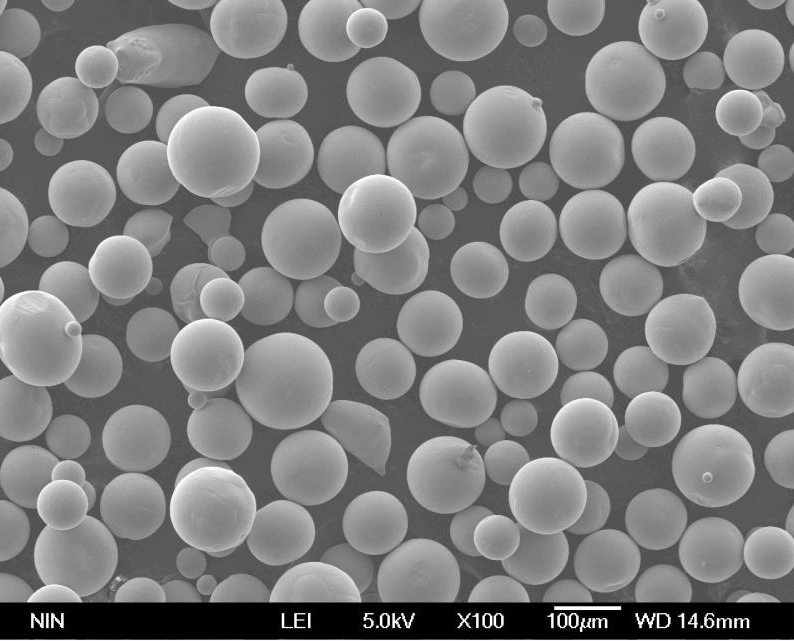
Perguntas frequentes
P1: Quais fatores devem ser considerados ao escolher um material de grau de forjamento?
Ao selecionar um material de grau de forjamento, considere fatores como resistência, tenacidade, ductilidade, resistência à corrosão e os requisitos específicos da aplicação. O ambiente em que o material será usado e o tipo de tensão que ele experimentará também são cruciais.
P2: Como a forja afeta as propriedades do material?
A forja melhora a estrutura de grão do material, resultando em propriedades mecânicas aprimoradas, como resistência e tenacidade. O processo também pode melhorar a resistência do material à fadiga e ao impacto.
P3: Qual é a diferença entre aço carbono e aço liga na forja?
O aço carbono contém principalmente ferro e carbono, sem elementos de liga adicionais. O aço liga inclui elementos como cromo, molibdênio e vanádio, que aprimoram propriedades específicas, como temperabilidade, resistência e resistência ao desgaste.
P4: Por que a liga de titânio é mais cara em comparação com outros materiais de forjamento?
As ligas de titânio são mais caras devido ao alto custo do titânio bruto e ao processamento complexo necessário para fabricar essas ligas. No entanto, sua relação resistência-peso superior e resistência à corrosão as tornam valiosas para aplicações de alto desempenho.
P5: As ligas de alumínio podem ser usadas em aplicações de alta tensão?
Embora as ligas de alumínio como 2024 e 6061 sejam fortes e leves, elas são geralmente usadas em aplicações menos exigentes em comparação com aços e ligas de titânio. Elas são adequadas para aplicações aeroespaciais e automotivas, onde a redução de peso é crítica.
